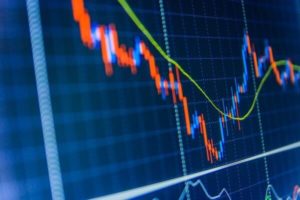
Despite a strong bounce from the September low, the EUR/USD has retreated back to the $0.98 mark. This is primarily due to the weak economic growth outlook for the region, which is primarily driven by rampant inflation. In addition to this, the risk of a prolonged economic downturn is also high. This could make the ECB take a more dovish approach in its rate decisions, or at least cut short its rate hiking cycle.
A strong bullish candle on Wednesday suggests the pair may have turned around, and now is an appropriate time to begin assessing the outlook for the euro. If the pair can break above the September high, it may have more room to move up. A break below this level would likely bring the 0.9910 area back into play.
The euro has been falling against the dollar for the past two months as concerns about the European economy have increased. The economy is suffering from rising inflation, which is exacerbated by rising energy costs and borrowing costs. The euro has fallen as low as $1.0395 in early February, before reversing direction.
With an increase in global yields, the US Dollar has benefited from flight-to-quality flows. In recent weeks, however, the euro has strengthened. The Federal Reserve has stated that it aims to foster a soft-landing for the economy. The ECB may take a more dovish approach in rate decisions, or it may carry out an interest rate hiking cycle into 2023. Until then, investors should be cautious when investing in the currency.
Although the ECB has stated that it is prepared to hike its key interest rate in December, a weak CPI number for the US may undermine market expectations. In October, economists expected a 0.6% rise in headline CPI, while the core reading was expected to have slowed.
Meanwhile, the Consumer Price Index (CPI) for the eurozone is expected to show a slight rise in inflation. This is in line with market expectations, but it does not provide the kind of big shock that EUR/USD needs. ECB President Christine Lagarde will speak on Thursday. Her comments will be important for the currency pair’s outlook.
In other words, the ECB is still struggling to achieve its mandate to maintain price stability. It is only now starting to hike interest rates, and inflation in the Euro Area is at a record high. If the Governing Council approves a 75bp rate hike on December 15, this could give the currency pair a boost.
The ECB has not raised its key interest rate since June last year. The Governing Council has set a target for inflation to be no more than 11%, and with inflation at 9.9% last month, it is likely that the ECB will keep its hiking cycle going into 2023. Unless the ECB re-prices its rate expectations, the currency pair is unlikely to move much.
Inflation in the UK has been above the government’s target for 40 years, but the inflation outlook is still very uncertain. In addition to the higher energy prices, food prices have also been high. The pound sterling has retreated from its mid-October high of $1.1218.
